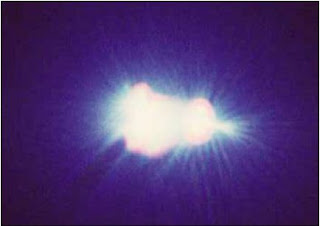Large kidney stones can obstruct the urethra and cause severe pain or infection. Current non-invasive approach for kidney stone crush called extracorporeal shock wave lithotripsy (
ESWL) has been employed since 1980. In ESWL, multiple shock waves with various pulse repetition frequency (PRF) are used to shatter the stones. For some cases, the resulting stone fragments are too big to pass the urethra, leading to surgical intervention for removal. The shock waves also cause damage of surrounding tissues.
From left to right: a typical shock wave profile for ESWL; kidney stone before and after ESWL. Adapted from Crum et al. (2008, Fig.1).
Fragments of stones after ESWL with different PRF. Adapted from Crum et al. (2008, Fig.2c).
Under support of UK Engineering and Physical Sciences Research Council (EPSRC) Warwick Innovative Manufacturing Research Centre (WIMRC) phase II major project "Non-Surgical Cavitation-Effect Destruction of Kidney Stones" (PI: Prof. Shengcai Li), a non-invasive technique for stone crush using the cavitation generated by the focused ultrasonic waves is being developed. The strong erosion ability of cavitation during collapse can shatter the stones into fine powder (approximately <1mm), which can be easily put out of human body.
Schematic of cloud cavitation control.Adapted from Matsumoto (2006, Fig.3.6).
Collapse of bubble cloud and generated shock wave. Adapted from Matsumoto (2006, Fig.3.10).
Natural kidney stones and fragments after the
ultrasonic irradiation. Adapted from Matsumoto (2006, Fig.3.13).
A three-year Ph.D. Studentship (R.ESCM 9217, £79,987) has been awarded to me through above EPSRC Project for theoretical and numerical investigations of central problems identified in this project. For my partial contributions to this project, readers are referred to the
Final project report. The main outputs are
1. Computer modelling of the system revealed that modulating the
HIFU frequency accelerates the growth of the cavitation bubbles (Zhang and Li, 2011). In simple terms the HIFU transducer frequency follows the resonant frequency of the cavitation bubbles. Compared with a constant HIFU frequency, the bubble growth rate is significantly increased (Li and Zhang, 2011).
2. A novel model based on “front tracking” methods for simulating the dynamics of bubble clouds with a high void fraction, and strong bubble-bubble interaction has been developed (Zhang and Li, 2010b). "Virtual Grid-Based" (VGB) front tracking accounts for bubble coalescence and splitting during DNS (Direct Numerical Simulation) (Zhang and Li, 2010c) and provides much higher accuracy.
3. Additional studies have extended the simulations into the higher frequency regions (MHz frequencies and above) employed by the HIFU transducers and examined the thermal effects of bubble oscillations in liquids (Zhang and Li, 2010a).
4. An improve approach has been proposed for accurate predictions of rectified diffusion near resonance (Zhang and Li, 2011).
5. The effects of liquid compressiblity on radial oscillations of gas bubbles in liquids have been identified (Zhang and Li, 2012).
More related works will be demonstrated in my Ph.D. thesis (available soon).
References
Crum et al. (2008). Cavitation and Therapeutic Ultrasound, Proceedings of WIMRC Cavitation Forum 2008, University of Warwick, UK, pp.10-14.
Li, S. C. and Zhang, Y. (2011). “Dynamic-frequency technique for speeding up bubble growth,” Proceedings of WIMRC 3rd International Cavitation Forum, University of Warwick, Coventry, UK, July 4-6, 2011.
Matsumoto, Y. (2006). Therapeutic application of acoustic cavitation, Proceedings of WIMRC Cavitation Forum 2006, University of Warwick, UK, Chap.3, pp.27-35.
Zhang, Y. and Li, S. C. (2012). “Effects of liquid compressibility on radial oscillations of gas bubbles in liquids,” Journal of Hydrodynamics, accepted.
Zhang, Y. and Li, S. C. (2010a). “Notes on radial oscillations of gas bubbles in liquids: Thermal effects,” J. Acoust. Soc. Am. 128, EL306-309.
Zhang, Y. and Li, S. C. (2010b). “Virtual grid-based front tracking method,” Engineering Computations, 27, 896-908.
Zhang, Y. and Li, S. C. (2010c). “Direct numerical simulation of collective bubble behavior,” Journal of Hydrodynamics, 22 (Supplement 1), 785-789.
Zhang, Y. and Li, S. C. (2011). “Improved theory for near-resonance bubble rectified diffusion with applications,” 2011 IEEE International Ultrasonics Symposium, Orlando, Florida, USA, October 18-21, 2011 (Poster).

























.jpg)






